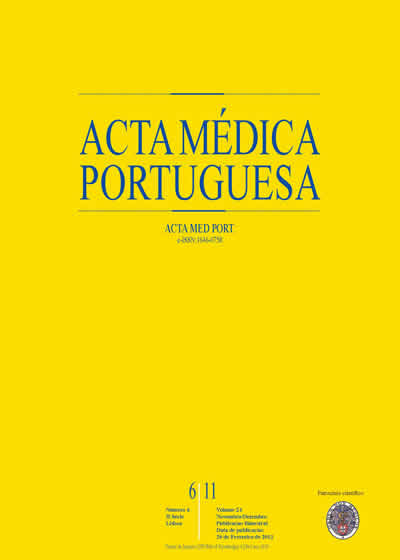Validation of prolonged grief disorder instrument for Portuguese population.
DOI:
https://doi.org/10.20344/amp.1422Abstract
This study aims to validate the Portuguese population the instrument PG-13 (Prolonged Grief Disorder), created by Prigerson et al. (2007) for diagnosis of prolonged grief, whose criteria are: the experience of loss generating intense longing and yearning for the deceased that extends for a period exceeding six months; emotional, cognitive and behavioral symptoms, dysfunction and meaningful life social and occupational functioning. The population includes 102 caregivers of patients accompanied by Support Team Palliative Care, Hospital Santa Maria. The participants are mostly female (82.4%) with mean age of 58.87 (SD: 13.41) and range between 15 and 84 years. Most respondents are widowed (62.1%), and 93.2% of these people are mourning the loss of a spouse. The second largest group of subjects corresponds to married persons (29.5%) who lost one of the parental figures (64.3%) and brothers (14.3%). Deceased family members have an average age of 68.68 (SD: 11.50), with amplitude between 27 and 89 years. The gender distribution in the group of deceased patients are 57.8% male and 42.2 % female. The internal consistency in the instrument is considered very good (a=.932). We found that 22.5% of the population manifests symptoms of prolonged grief. There were no significant differences in terms of socio-demographic variables or in the circumstances of illness and death. Prolonged Grief Disorder is more prevalent in female subjects (91.3%), widowed (68.2%) and in cases where the deceased was being the spouse (65.2%).Downloads
Downloads
Published
How to Cite
Issue
Section
License
All the articles published in the AMP are open access and comply with the requirements of funding agencies or academic institutions. The AMP is governed by the terms of the Creative Commons ‘Attribution – Non-Commercial Use - (CC-BY-NC)’ license, regarding the use by third parties.
It is the author’s responsibility to obtain approval for the reproduction of figures, tables, etc. from other publications.
Upon acceptance of an article for publication, the authors will be asked to complete the ICMJE “Copyright Liability and Copyright Sharing Statement “(http://www.actamedicaportuguesa.com/info/AMP-NormasPublicacao.pdf) and the “Declaration of Potential Conflicts of Interest” (http:// www.icmje.org/conflicts-of-interest). An e-mail will be sent to the corresponding author to acknowledge receipt of the manuscript.
After publication, the authors are authorised to make their articles available in repositories of their institutions of origin, as long as they always mention where they were published and according to the Creative Commons license.









